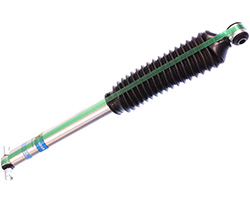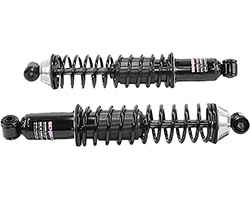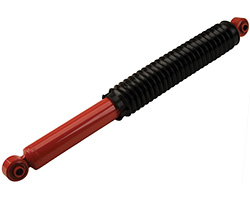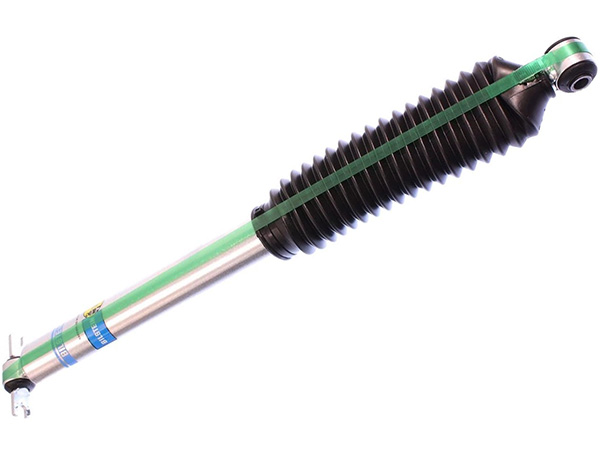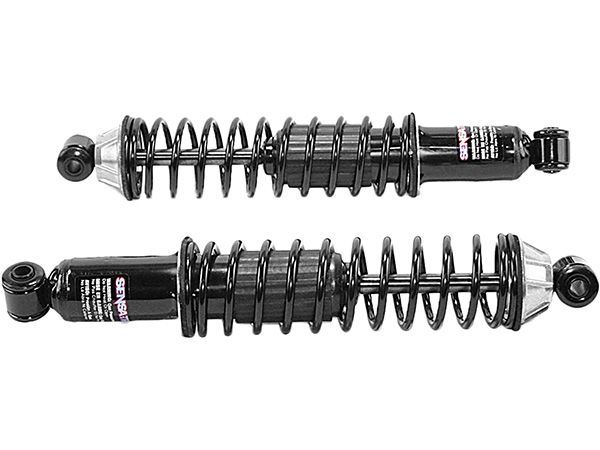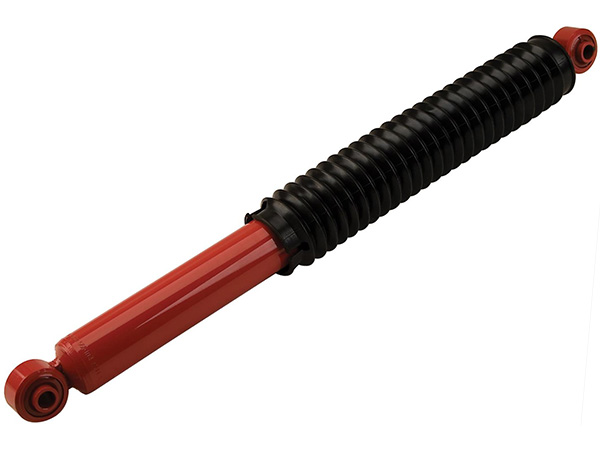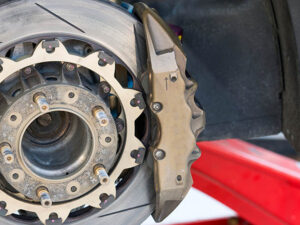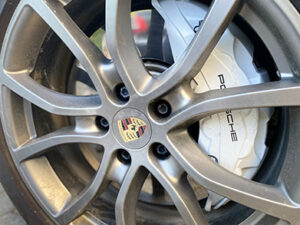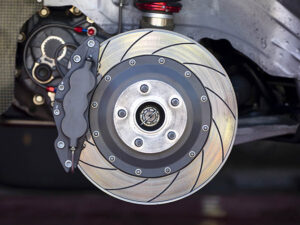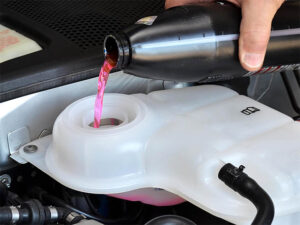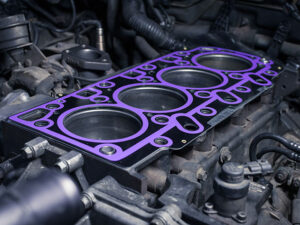Home \ Shop \ Automotive Garage \ Shock Absorbers
3 Best Shock Absorbers for Smooth and Precise Driving in 2025
- 1. BILSTEIN Shock Absorbers 5100 Series
- 2. MONROE Shock Absorbers (58620)
- 3. KYB MonoMax Shock Absorber (565104)
- 4. How Do Shock Absorbers Work?
- 5. Why Do Shock Absorbers Fail?
- 6. What are the Symptoms of Bad Shock Absorbers?
- 7. How to test my shock absorbers?
- 8. When should shock absorbers be changed?
- 9. How long can I drive with bad shock absorbers?
- 10. Last Words
When was the last time you have heard someone blaming bad shock absorbers for ride-related issues in their cars? Most drivers are aware that these are the components that have something to do with vehicles suspension. Still, many of them are not sure how shock absorbers work and probably wouldn’t spot a bad one. And with so many different models to choose from, buying new ones is not a simple job, either. As a result, owners may end up with shock absorbers that are not quite suitable for their cars. To help you avoid such mistakes, we will find out what shock absorbers exactly do and how to pick the best ones.
PROS
- Works great with popular suspension upgrades
- Reliable and long-lasting performance in even the harshest conditions
CONS
- Less capable in combination with bigger wheels
FEATURES
- A simple and robust Monotube design
- Fade-free performance under heavy loads
- Suitable for the most common lift kits on the market
- Internal valving that adapts to changing road conditions
Established in 1873, this German manufacturer has always used innovative technologies and solutions to create cutting-edge automotive products. This allowed them to become one of the most reputable suppliers of suspension components. Thanks to this, their products are a go-to option for many premium European manufacturers as factory fitment for their vehicles. But the aftermarket performance range of shock absorbers, however, is what sets Bilstein apart from the rest. These are products that aim at vehicles with extensively modified suspensions. This includes both performance cars that focus on handling and SUVs with lifted suspensions for extra ground clearance.
One of the products that are popular among owners of lifted vehicles is this MonoTube shock absorber. What makes it unique is its field of application, as it aims at modified 2007 Jeep Wrangler. When designing it, engineers at Bilstein considered the most common upgrades these vehicles have, including lift-kits and bigger tires. The most notable upside this shock absorber offers is its relentless and fade-free performance. True offroaders will find this important, as these shock absorbers will keep up on even the harshest of terrains. This is possible thanks to its unique single-cylinder design, which makes it simple and reliable. Other significant features are adaptive damping rate, which is possible thanks to its digressive valving, and the included mounting hardware. These shock absorbers ensure excellent performance on Jeeps with moderate lifts and matching wheels.
Buyers, however, should know that these shock absorbers may not be the best pick for vehicles with extreme lifts and tire sizes. This limitation is also their only potential drawback. Other than that, they are an excellent choice for 2007 Jeep Wrangler owners with moderate suspension upgrades.
PROS
- Reduces sag under heavy loads
- Improves handling
- Comes with a limited lifetime warranty
CONS
- Price
FEATURES
- Load-adjusting technology
- Adjustable damping rate ensures excellent ride on all surfaces
- Self-lubricating seals will reduce friction and corresponding wear
As one of the global industry leaders, Monroe has been manufacturing shock suspension components since the dawn of the automotive industry. Named after the city in Michigan, this US manufacturer has always produced well-balanced suspension parts for anything with wheels. Their products have always been popular among car manufacturers and mechanics, although racing was the thing that made them famous. During the 70s and 80s, Monroe has been one of the biggest suppliers for many successful teams in various racing series. Their advertising team hasn’t failed to exploit this, as they made it plain whose suspension components winning cars had.
While sporty applications made Monore famous, most of their product range aims at everyday cars and applications. One such product is this Load Adjust shock absorber, which fits vehicles like Dodge Grand Caravans and Chrysler Town & Country. Being minivans, they have to adapt to different load conditions, from carrying only the driver to whole families with their luggage. Factory suspension copes well with these demands, although its rear end will sag under full load. This upset the handling and may make the vehicle considerably less stable under sudden maneuvers. Monore’s shock absorber uses a unique load-adjusting technology which allows it to reduce sag. It goes without saying this is its most important feature, as it improves handling and increases overall vehicle safety.
Other features include self-lubricating seals, which ensure longevity, and multi-valve technology that makes adapting to different road surfaces easier. Apart from the price, which is a bit high, there is really nothing to consider as a downside. Some drivers claim the ride can be too bouncy under full load, although this seems to be a bit subjective.
PROS
- Allows better control when driving under full load
- Robust construction will ensure longevity
- Excellent value for money
CONS
- Harsh ride when the truck is not under heavy load
FEATURES
- Single tube design
- Gas shock absorber
- Thick rubber boots for extra protection
Like the previous two brands of this list, KYB has an excellent reputation for its car suspension parts. But unlike them, this Japanese manufacturer has a product range that spans far beyond automotive components. This includes anything from heavy-duty machinery and industrial equipment to hydraulic and pneumatic assemblies for the aeronautical industry. When it comes to automotive applications, they manufacture different suspension and steering components, many of which are factory fitment for Japanese and Korean cars. Their shock absorbers are reliable and durable, with some of them even outliving the vehicle itself.
In addition to factory-fitment shock absorbers, this manufacturer also offers a wide range of uprated products for aftermarket applications. Most of them focus on tackling the issues that are the result of various specific applications. One of the most successful products, the MonoMax Gas shock absorber, aims at truck owners who haul heavy loads. This product fits a range of vehicles that use the GM platform, including trucks such as Chevy Silverado and GMC Sierra. In comparison to stock ones, they will offer a stiffer and less bouncy ride in such conditions. This increases stability and improves steering response, which ensures better control.
It is also worth mentioning thick rubber boots, which will protect moving components against dirt and rocks. On the downside, the ride may be harsh when the vehicle is not carrying much load.
How Do Shock Absorbers Work?
All modern cars have some sort of suspension, which allows the wheels to adjust themselves to the bumps on the surface beneath. Their shapes and configurations vary between different vehicles, although there are some components each of them uses. One of them is a shock absorber, which connects suspension parts to the chassis. While control arms and springs allow the suspension to flex on uneven terrain, shock absorbers will prevent it from being jumpy afterward. Without them, the vehicle would shake and bounce every time it goes over a bump, affecting its handling and ride comfort.
At its essence, the shock absorber is nothing more than a metal cylinder with a piston inside it. This cylinder is filled with oil or gas, which generates a counterforce that prevents the piston from moving too fast. Automotive engineers refer to this as damping rate, which defines vehicles’ ride quality and handling characteristics. A shock absorber with a lower damping rate will give a smooth and comfortable ride, although at the expense of excessive body roll. This makes the steering less precise, which is why sporty cars have ones with a higher damping rate.
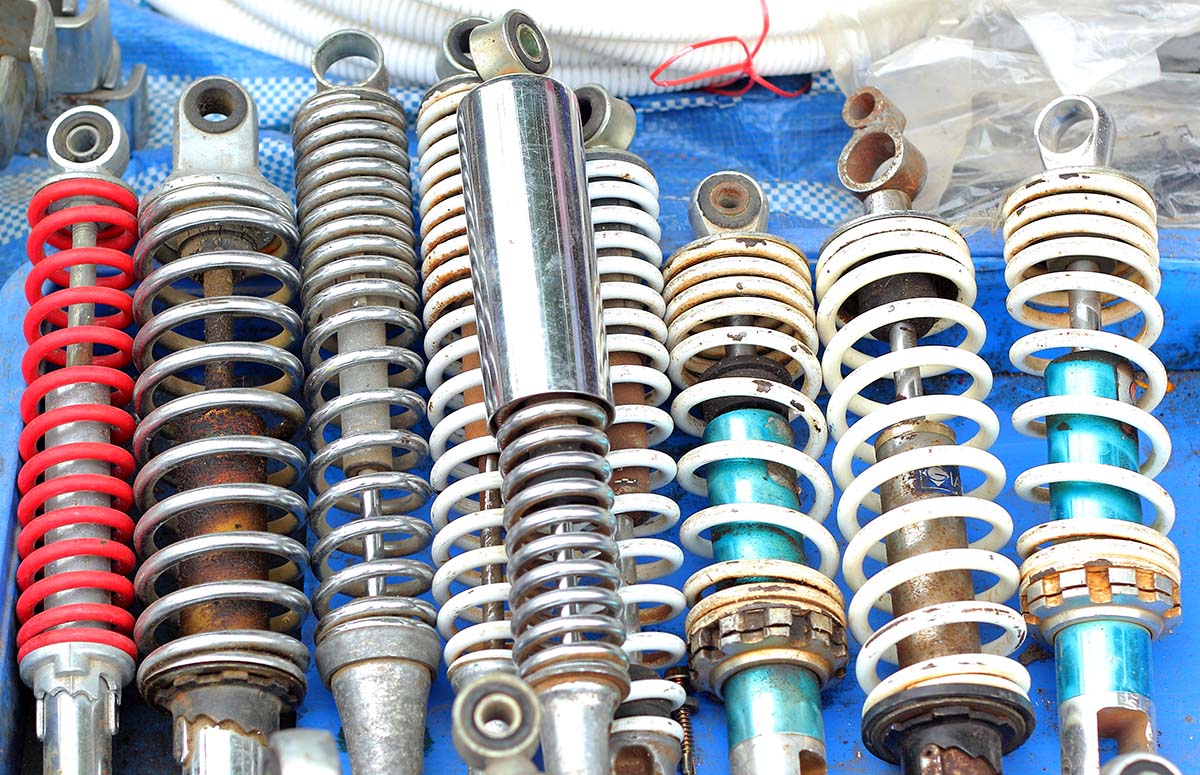
Why Do Shock Absorbers Fail?
During their lifetimes, shock absorbers go up and down numerous times, which causes gradual wear and subsequent failure. In most cases, the rubber gasket at the top of the cylinder that seals it off will start leaking. This lets the oil or gas get out of the absorber, allowing its piston to move without resistance. Such a shock absorber will not serve its purpose anymore, as it loses the ability to stabilize the vehicle.
Another common failure point is the piston itself, whose sides and sealing rings wear out with time. As a result, the gap between the piston and cylinder wall will become too large, allowing it to move with less resistance. Despite still being able to do their job to a certain extent, such shock absorbers will have significantly lower damping rates. Lastly, it is also possible for the shock absorber to bend out of shape, which usually happens because of excessive loads and forces. Offroad vehicles with extreme suspension lifts are the most likely to suffer from something like this.
What are the Symptoms of Bad Shock Absorbers?
Several symptoms may help reveal shock absorber issues, among which a poor ride quality is the one that is the easiest to spot. A broken shock absorber will cause the vehicle to jump and bounce when going over bumps or potholes. This is because it can’t firm up the suspension and prevent its components from flexing under loads. In more severe cases, the tire may even lose contact with the surface beneath it whatsoever, causing the vehicle to strongly swerve to the side. As obvious as it sounds, such unpredictable vehicle behavior significantly increases the risk of a crash and serious injuries.
Car owners may also notice traces of escaping oil on the shock absorber or surrounding suspension components. Depending on the quantity, this oil may also drip down and create small puddles beneath the vehicle. Unusual tire wear is another potential symptom, although many owners and mechanics fail to link these two together. A telltale sign to watch for are random patches of missing rubber on treads, which look as if something chewed them off. This happens when the shock absorber fails to hold the wheel firmly against the road, causing excessive vibration on motorway speeds.
FAQs:
How to test my shock absorbers?
The easiest way of checking shock absorbers’ performance is by doing something mechanics refer to as the bounce test. Do this by leaning at one corner of the vehicle to press it downwards before releasing it suddenly. A shock absorber that is in good shape will stop the car from bouncing up more than once. And if it rebounds several times before coming to a standstill, the corresponding shock absorber is probably in bad shape. Another similar test, which is equally simple, involves sudden braking while driving at low speed. As with the previous one, a vehicle that continues bouncing up and down afterward will need new shock absorbers.
When should shock absorbers be changed?
As with most other automotive components, there is no simple answer to how long shock absorbers may last. This is because their lifespan depends on several factors, including driving habits and prevailing road conditions. Tires themselves are something to consider, too, as improperly balanced ones may cause premature failure of the corresponding shock absorber. Under normal running conditions, most shock absorbers will last anywhere between 50,000 and 100,000 miles. To be on the safe side, owners should check their condition and test their performance once a year.
How long can I drive with bad shock absorbers?
To some drivers, a car with worn or broken shock absorbers may seem to ride just fine. And it could be like that, at least while the road surface is smooth and the speeds are relatively low. This, however, can change rather abruptly if the driver needs to perform a sudden maneuver or brake sharply. In such situations, the vehicle can be very bouncy and difficult to control, which may cause a crash. With that in mind, driving a car with broken shock absorbers is not a good idea.
Last Words
As we have explained here, a shock absorber is a significant suspension component. When working well, it will make the ride comfortable and increase stability during sudden maneuvers. There are many shock absorbers on the market to choose from, and we picked several of them. Monroe will ensure a sag-free ride for minivans with their Load-Adjust shock absorber. Similar will be with the MonoMax series from KYB, which aims at heavy-loaded trucks. As opposed to them, Bilstein offers shocks that are designed for extensively modified Jeep Wranglers.
We do an efforts to find, research and recommend the best products. So, we may receive commissions from purchases that you make after following the links in our product reviews.


